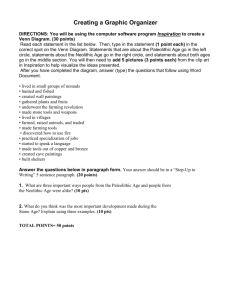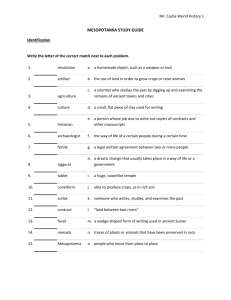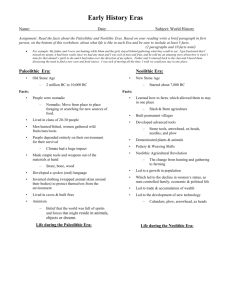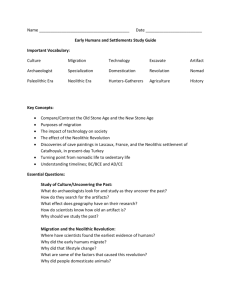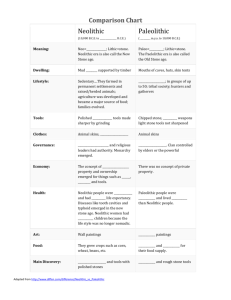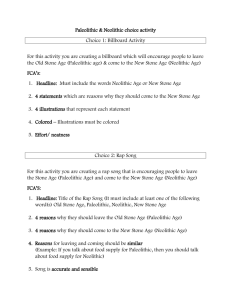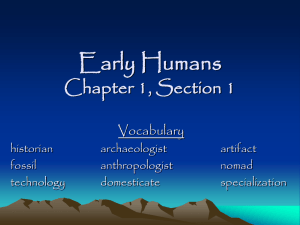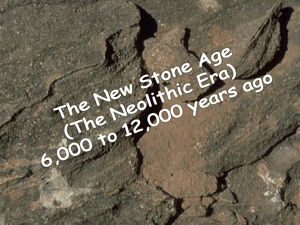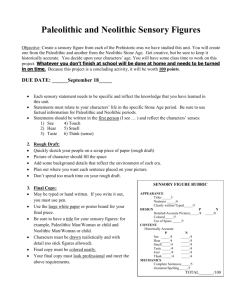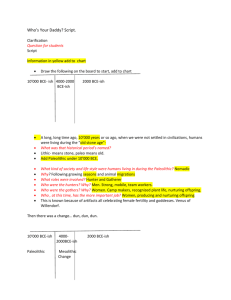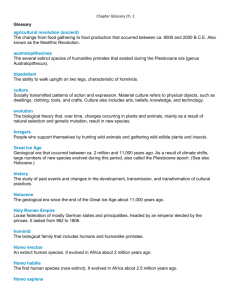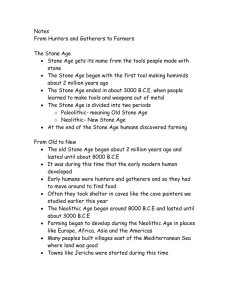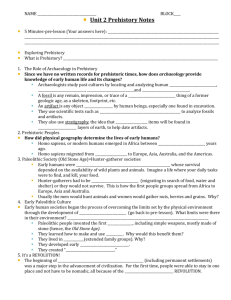Stone Age Learning Outcomes Vocabulary Archaeologists
advertisement
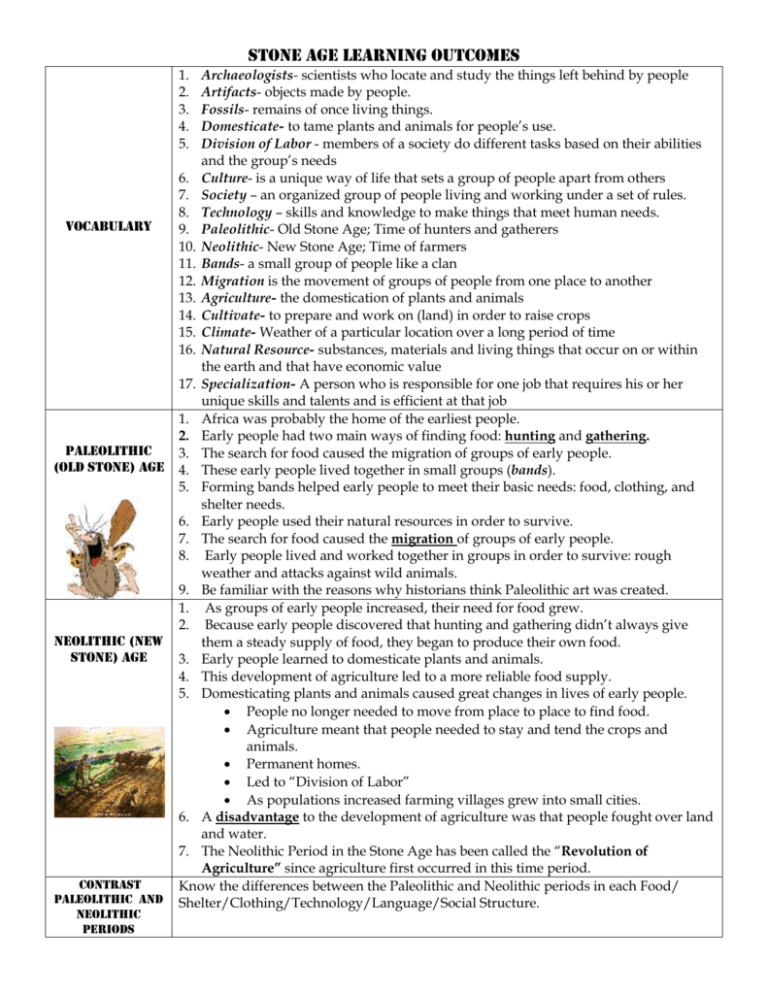
1. 2. 3. 4. 5. Vocabulary Paleolithic (Old Stone) Age Neolithic (New Stone) Age Contrast Paleolithic and Neolithic Periods Stone Age Learning Outcomes Archaeologists- scientists who locate and study the things left behind by people Artifacts- objects made by people. Fossils- remains of once living things. Domesticate- to tame plants and animals for people’s use. Division of Labor - members of a society do different tasks based on their abilities and the group’s needs 6. Culture- is a unique way of life that sets a group of people apart from others 7. Society – an organized group of people living and working under a set of rules. 8. Technology – skills and knowledge to make things that meet human needs. 9. Paleolithic- Old Stone Age; Time of hunters and gatherers 10. Neolithic- New Stone Age; Time of farmers 11. Bands- a small group of people like a clan 12. Migration is the movement of groups of people from one place to another 13. Agriculture- the domestication of plants and animals 14. Cultivate- to prepare and work on (land) in order to raise crops 15. Climate- Weather of a particular location over a long period of time 16. Natural Resource- substances, materials and living things that occur on or within the earth and that have economic value 17. Specialization- A person who is responsible for one job that requires his or her unique skills and talents and is efficient at that job 1. Africa was probably the home of the earliest people. 2. Early people had two main ways of finding food: hunting and gathering. 3. The search for food caused the migration of groups of early people. 4. These early people lived together in small groups (bands). 5. Forming bands helped early people to meet their basic needs: food, clothing, and shelter needs. 6. Early people used their natural resources in order to survive. 7. The search for food caused the migration of groups of early people. 8. Early people lived and worked together in groups in order to survive: rough weather and attacks against wild animals. 9. Be familiar with the reasons why historians think Paleolithic art was created. 1. As groups of early people increased, their need for food grew. 2. Because early people discovered that hunting and gathering didn’t always give them a steady supply of food, they began to produce their own food. 3. Early people learned to domesticate plants and animals. 4. This development of agriculture led to a more reliable food supply. 5. Domesticating plants and animals caused great changes in lives of early people. People no longer needed to move from place to place to find food. Agriculture meant that people needed to stay and tend the crops and animals. Permanent homes. Led to “Division of Labor” As populations increased farming villages grew into small cities. 6. A disadvantage to the development of agriculture was that people fought over land and water. 7. The Neolithic Period in the Stone Age has been called the “Revolution of Agriculture” since agriculture first occurred in this time period. Know the differences between the Paleolithic and Neolithic periods in each Food/ Shelter/Clothing/Technology/Language/Social Structure. Stone Age Learning Outcomes


